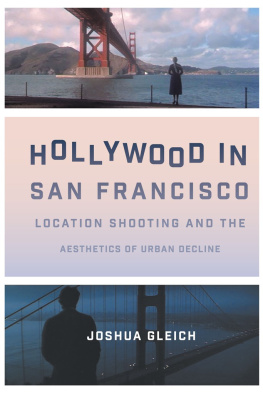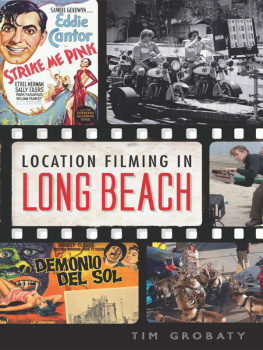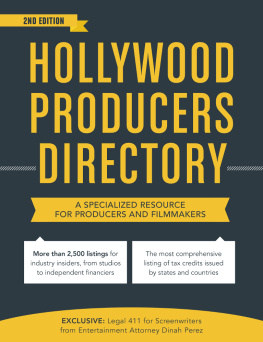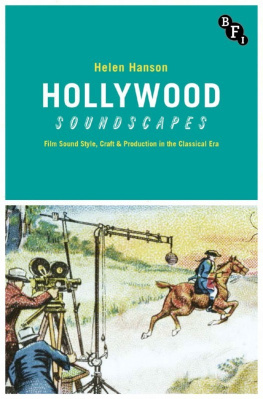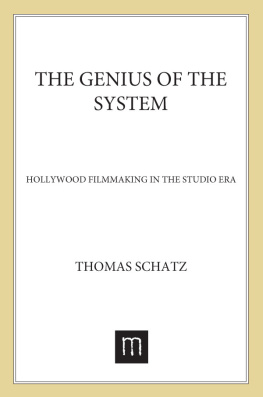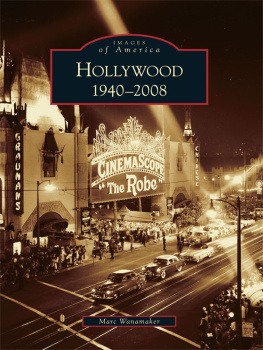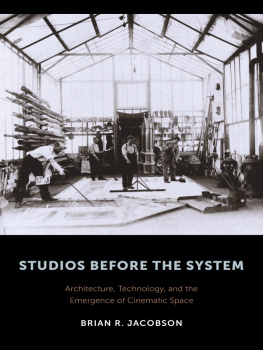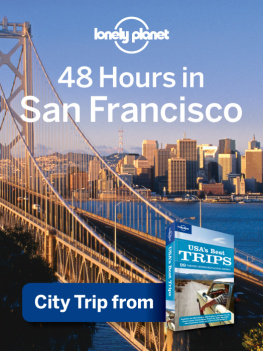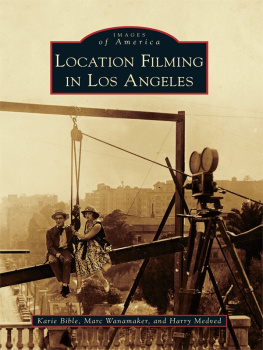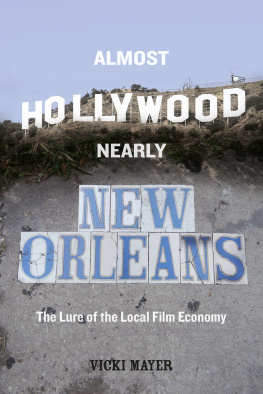TEXAS FILM AND MEDIA STUDIES SERIES
Thomas Schatz, Editor
HOLLYWOOD IN SAN FRANCISCO
LOCATION SHOOTING AND THE AESTHETICS OF URBAN DECLINE
JOSHUA GLEICH

UNIVERSITY OF TEXAS PRESS
AUSTIN
Copyright 2018 by the University of Texas Press
All rights reserved
First edition, 2018
Requests for permission to reproduce material from this work should be sent to:
Permissions
University of Texas Press
P.O. Box 7819
Austin, TX 787137819
utpress.utexas.edu/rp-form
Library of Congress Cataloging-in-Publication Data
Names: Gleich, Joshua, author.
Title: Hollywood in San Francisco : location shooting and the aesthetics of urban decline / Joshua Gleich.
Other titles: Texas film and media studies series.
Description: First edition. | Austin : University of Texas Press, 2018.
Series: Texas film and media studies series | Includes bibliographical references and index.
Identifiers: LCCN 2018001198 | ISBN 978-1-4773-1645-0 (cloth : alk. paper) | ISBN 978-1-4773-1755-6 (pbk. : alk. paper) | ISBN 978-1-4773-1756-3 (library e-book) | ISBN 978-1-4773-1757-0 (non-library e-book)
Subjects: LCSH: Motion picture locationsCaliforniaSan Francisco. | Motion picturesCaliforniaSan FranciscoHistory. | Motion picture industryCaliforniaSan FranciscoHistory. | Cities and towns in motion pictures. | San Francisco (Calif.)In motion pictures.
Classification: LCC PN1995.67.S36 G54 2018 | DDC 791.4309794/61dc23
LC record available at https://lccn.loc.gov/2018001198
doi:10.7560/316450
CONTENTS
ACKNOWLEDGMENTS
THE KERNEL OF THE IDEA FOR THIS BOOK emerged almost a decade ago when I was working on a masters degree at Emory University. I suggested it in a paper proposal for James Steffens historiography class. He thought it sounded more like a book proposal, and clearly he was right. This book had a long way to grow though, and reflects generous, thoughtful attention from so many people before and throughout its development.
I would like to thank Jeanine Basinger, my undergraduate mentor at Wesleyan University, as well as Lisa Dombrowski and Scott Higgins. At Emory, Matthew Bernstein was a role model as a professor and has been wonderfully supportive well beyond my two years in Atlanta. I would also like to thank David Pratt, James Steffen, Michelle Schreiber, and Eddy Von Mueller. I am grateful to the late Dana White for introducing me to the field of urban studies.
Tom Schatz has probably read more versions of this book than I have. He has been instrumental as a professor, then a mentor, then a dissertation supervisor, and finally as an editor at the University of Texas Press. Janet Staiger was an exceptional teacher, mentor, reader, and committee member during my time in Austin. Thank you also to committee members Kathryn Fuller-Seeley, Mark Shiel, Allan Shearer, and Joe Straubhaar, as well as Lalitha Gopalan for her unofficial input.
I would also like to thank the archivists and archival staff that supported this project. These include Sandra Joy Aguilar, Jonathan Auxier, and Jeremy Tipton at the Warner Bros. Archives, USC; Jenny Romero at the Margaret Herrick Library; Julie Graham at UCLA Special Collections; and the staff at the San Francisco History Center. Thanks are also due to the friends who supported me during research trips. Noah Mark and Jon Moshman graciously provided a place to stay, a spare car, and welcome company during a frenzied archival trip to Los Angeles. Eric Gladstone offered housing and occasional research assistance in San Francisco.
I have enjoyed the opportunity to present sections of this project at various conferences, most often at the Society for Cinema and Media Studies Conference, where Ive learned a great deal from my fellow participants. In particular, Joshua Glick, Erica Stein, Mark Shiel, Merrill Schleier, Julie Turnock, Brendan Kredell, Pam Wojcik, Nathan Holmes, Stan Corkin, Sabine Haenni, Jennifer Peterson, Lawrence Webb, and Noelle Griffis have been fixtures as panel or audience members, providing invaluable feedback and context for my work. The Urban Studies/Geography/Architecture Scholarly Interest Group deserves recognition for their ongoing support for my research.
Special thanks to members of my PhD cohort, in particular, Paul Monticone and Stuart Davis. Dave Fresko and Ross Melnick have provided much needed advice and support as well. Thank you to my colleagues at Arizona, Mary Beth Haralovich, Barbara Selznick, Brad Schauer, Shane Riches, and Anna Cooper, for helping me balance the completion of this book with teaching and other responsibilities. And thank you to Jim Burr at the University of Texas Press for guiding this project through publication.
Thank you to my parents, Charlie and Sheryl, and my sister, Sarah, for their support and enthusiasm throughout the long process of writing a book while beginning an academic career. My greatest thanks and love to Ariel, whos been there for me across several state lines during the course of this project. And thank you to my daughter, Violet, whose unbridled energy is a daily inspiration.
INTRODUCTION
GOLDEN GATEWAY
The Golden Gate Bridge is the iconic symbol of San Francisco, captured innumerable times on film and television. It is also a filmmaking location with specific demands. In 1947, Dark Passage tried to shoot at the Presidio with the bridge in the background, but couldnt because the park was closed on Sundays, one of many incidents that reflected Hollywood filmmakers limited experience with extensive location shooting in the immediate postwar era. In Dirty Harry (1971), the bridge looms over a group of medical workers in dim, predawn light as they pull a nude fourteen-year-old girls body out of a drainage ditch. The scene would have been impossible to shoot a few years earlier, not only for its macabre imagery but also because earlier film stocks would have required far more light.
These production details and screen depictions point to many of the factors that shaped the major studios development of location shooting practices in the three decades following World War II. Changing economics, technologies, production values, and logistics not only allowed crews to shoot more efficiently and effectively on location, but also guided their choice of locations and style of location filmmaking. The Golden Gate Bridge is as picturesque today as it was during the filming of Dirty Harry or Vertigo. But Hollywoods approach to capturing San Francisco as a setting underwent fundamental changes during the rocky restructuring of the American film industry between the studio crises of the late 1940s and the rise of the blockbuster in the mid-1970s.
How did the dreamy San Francisco of Vertigo become the nightmarish wasteland of Dirty Harry? The simplest explanation might be that it suffered a massive downturn akin to postwar Detroits, but San Francisco was one of the most prosperous American cities during the turbulent 1960s and early 1970s. Perhaps the different styles of directors Alfred Hitchcock and Don Siegel account for the disparate images of the city? Yet Hitchcocks Frenzy (1972) provides nearly as bleak a picture of London as Siegels depiction of San Francisco. It is a unique American city architecturally, topographically, and culturally. However, with rare exceptions, San Francisco appeared on-screen with the same style and narrative function as other popular urban locations of the period.
A primary but underexamined causal factor in Hollywoods shifting postclassical style is location shooting.
But something strange happened on the way to the city. As filming on location in American cities became routine, filmmakers began to seek out their roughest corners. San Francisco remained a prominent site for Hollywoods growing exploitation of urban location shooting. Yet the rising prevalence of filming in San Francisco during the 1960s and 1970s often degraded the citys most attractive vistas while exploring its ugly recesses. A grimy urban aesthetic emerged and deepened over time in films like
Next page
